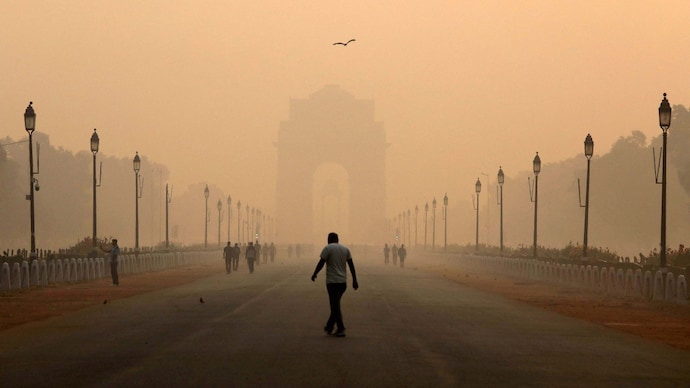
Every winter, Delhi transforms into a gas chamber. Schools are shut, construction halts, and air quality indices shoot beyond the “hazardous” mark. Flights are grounded, visibility drops, and the capital’s skyline turns into a suffocating blur. It is an annual health emergency that affects over 30 million people, and yet, it returns with clockwork precision. Meanwhile, beijing – once the poster child of urban smog – now boasts clean blue skies and breathable air. The transformation is not accidental; it’s the result of decisive political will, scientific planning, and sustained investment. Delhi’s struggle, on the other hand, reflects the price of half-measures and bureaucratic hesitation.
Beijing’s Transformation: From Grey Skies to Blue Horizons
Beijing’s war on pollution began in 2013 with an unprecedented national plan. Recognizing that pollution was not just an environmental issue but a social and economic threat, china launched the “Air Pollution Prevention and Control Action Plan”. This was a trillion-dollar effort backed by legislation, technology, and enforcement. The results were transformative. The capital reduced coal consumption by 30%, decommissioned more than 3,000 small coal-fired boilers, and relocated or shut down heavy industries operating within city limits.
Transportation underwent a complete overhaul. Diesel buses were replaced with electric ones, and by 2020, electric vehicles accounted for 40% of new car sales. Beijing’s subway network expanded beyond 1,000 kilometers, giving citizens a cleaner, more efficient alternative to private vehicles. Parallelly, strict emission controls were imposed on factories and vehicles, while subsidies encouraged renewable energy adoption.
Technology served as Beijing’s secret weapon. Apps like Blue Sky provided real-time pollution data through over 1,500 monitoring stations, empowering citizens to track air quality at the neighborhood level. This transparency turned awareness into accountability, forcing industries and officials to act. At the same time, ecological restoration played a vital role – the city planted over 100 million trees, creating green buffers that absorbed pollutants and improved urban microclimates.
The Results: A City Reborn
The numbers speak for themselves. Between 2013 and 2017, Beijing’s PM2.5 levels fell by 35%, and the average life expectancy of residents increased by 4.6 years. According to the Energy Policy Institute at the University of Chicago, China’s nationwide efforts were responsible for three-quarters of the global reduction in air pollution during that period. By 2021, Beijing’s annual average PM2.5 level dropped to 33 micrograms per cubic meter – below the World Health Organization’s interim target for safe air.
Importantly, Beijing achieved this without derailing its economy. China’s GDP continued to grow, disproving the long-held notion that environmental protection and economic development are incompatible. Instead, cleaner air became a driver of health, productivity, and international credibility.
Delhi’s Efforts: Plans Without Execution
Delhi’s anti-pollution strategy has often been rich in rhetoric but poor in execution. From the Graded Response Action Plan (GRAP) to the Odd-Even vehicle scheme, policies have been implemented sporadically and reactively, rather than as part of a cohesive long-term vision. Multiple agencies – from the Delhi Pollution Control Committee to the Central Pollution Control Board – operate with overlapping jurisdictions and limited coordination.
A 2024 CAG report highlighted glaring inefficiencies: 88% of Delhi’s pollution monitoring stations failed to meet national standards, and there were instances of officials using water sprinklers near sensors to artificially suppress readings. This manipulation doesn’t just hide the truth – it delays solutions. Unlike Beijing’s firm enforcement and transparent data systems, Delhi’s response remains fragmented and inconsistent.
To its credit, Delhi has seen small improvements. Between January and October 2025, there were no “severe” air quality days, and average PM2.5 levels declined from 83 to 72 micrograms per cubic meter. However, the reprieve is short-lived – every Diwali and winter crop-burning season brings the city back to emergency mode, exposing the fragility of its progress.
Key Lessons Delhi Can Learn from Beijing
Beijing’s turnaround offers actionable insights for Delhi and other Indian cities battling chronic air pollution:
- Regional collaboration: Pollution knows no borders. Delhi’s air quality depends on cooperation with neighboring states like Haryana, Punjab, and Uttar Pradesh to address stubble burning and industrial emissions collectively.
- Strict enforcement of laws: Beijing didn’t negotiate with polluters – it shut them down. Delhi must enforce compliance consistently, not selectively, and impose meaningful penalties for violations.
- Massive investment in clean technology: Transitioning to renewable energy, electric mobility, and waste-to-energy plants is essential. Incentivizing green startups can make clean solutions more accessible.
- Transparent and accountable data systems: A network of independent, tamper-proof sensors with open public access – as Beijing used – can prevent data manipulation and build citizen trust.
- Continuous funding and political will: Pollution control cannot depend on yearly budgets or election cycles. Dedicated funds, long-term planning, and bipartisan commitment are vital for sustained impact.
Democracy and Discipline Can Coexist
Beijing’s success is not a triumph of authoritarian control; it is proof that leadership and execution matter. Delhi, as a democracy, has an even greater opportunity – to prove that freedom and responsibility can reinforce each other. Citizens have the right to clean air, but they also have a duty to demand accountability, adopt greener habits, and support sustainable policies.
The contrast between Beijing and Delhi is not just about governance – it’s about urgency. While Beijing acted like it was running out of time, Delhi behaves as if it has plenty. The truth is, it doesn’t. The clock is ticking, and every breath lost to smog is a reminder of what’s at stake. For Delhi to breathe again, it must act with the precision of Beijing – and the conscience of India.
For breaking news and live news updates, like us on Facebook or follow us on Twitter and Instagram. Read more on Latest India on thefoxdaily.com.





COMMENTS 0